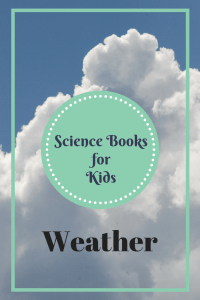Ever watched the weather report and wondered what it would be like to be a meteorologist? Here’s a fun way to learn about the weather and try out being weather scientist at the same time: Dress up as a meteorologist and give a pretend weather report.
Gather:
- a camcorder/video camera
- poster paper and markers to make weather maps
- local weather information
- dress up clothes
Step 1. Do some research about meteorologists and what they do.
Did you know meteorologists stand in front of a green screen (called a chrome-a-key) and point to weather fronts by looking in a nearby monitor? The Weather Wiz Kids website has information about Becoming a Meteorologist.
2. Learn how to read a weather map and prepare a weather report. Kids Online Resource (KidsOLR) has a Meteorology page with tons of weather links to help with your research (this page does have Google ads at the top). You can use the weather words list below to get you started, too.
3. Make posters showing cold fronts, warm fronts, the current weather conditions, and the local weather forecast.
4. Dress up like you are going to be on television. Then have a friend or family member take a video of you presenting the weather.
Extension:Â Some television stations have tours or information days. Check to see if you can visit one of your local meteorologists to learn more.
Weather Words:
- air mass – air moving in large blocks
- atmosphere – the blanket of air that encircles the earth. It is a mixture of gases, liquids and fine solids. Living things can also be found in the atmosphere, such as algae, bacteria and fungi. The atmosphere contains 78% nitrogen and 21 % oxygen.
- blizzard – heavy snow with high winds, 35 mph or faster
- cloud classification -clouds are classified by shape and height and given names such as cumulus, cirrus, stratus, etc.
- condensation – process of water vapor changing into a liquid
- dew point – temperature at which air becomes saturated with water vapor and condensation occurs (keep in mind that warm air holds more water vapor than cool air)
- drizzle – fine precipitation with water droplet sizes smaller than rain
- evaporation – changing liquids into vapor or gas at temperatures lower than the boiling point
- flood – water levels rising above normal, often quickly
- fog – technically a very low-lying cloud
- fronts, cold front – cold air mass approaches warm air mass and lifts it
- warm front – warm air meets cooler air and rises over it
- hail, hailstones – chunks of ice produced by updrafts in thunderstorms
- humidity – amount of water vapor in the air
- hurricane -large-scale, violent wind and rain storm that forms in the Atlantic Ocean.
- isobar – line drawn on a weather map to indicate points of equal air pressure
- isotherm – line drawn on a map to connect points of equal temperature
- jet stream-Â a fast-moving river of air high in the atmosphere
- lightning – huge electrical charge forming during storms
- meteorologist – person who studies weather
- monsoon – heavy rain resulting from a prevailing seasonal wind pattern
- nimbus – dark clouds full of water vapor
- precipitation – water falling from clouds
- relative humidity – amount of water vapor in the air compared to the amount needed for saturation at that temperature
- shower – brief period of precipitation
- sleet – snow that melts in the air and then refreezes as pellets
- snow – ice crystals that form in clouds and fall to earth
- sun – the star that is at the center of our solar system
- temperature – amount of hotness or coldness as measured by the kinetic energy of the atoms or molecules
- thunder – lightning passing through air causes a shock wave heard as the loud noise called thunder
- tornado – violently rotating column of air
- typhoon – large-scale, violent wind and rain storm that forms in the Pacific Ocean
- wind -moving air
If you like your video and upload it, be sure to send us a link.
Looking for more information about weather? See our growing list of weather children’s books at Science Books for Kids.




Leave a Reply